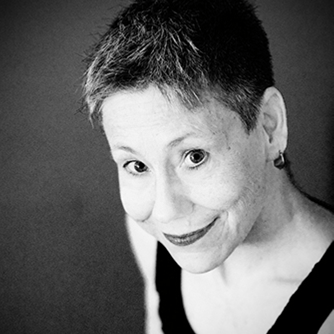For International Translation Day, we’ve compiled fifteen essays, interviews, and conversations from the last fifteen years of Words Without Borders on the art and craft of translation, with topics ranging from translators as sci-fi heroes to the undeniable ubiquity of a phrase.
“[Translation] expands and deepens our world, our consciousness, in countless, indescribable ways.”
—Edith Grossman discusses the vital importance of translation in an excerpt from Why Translation Matters.
“It is not the lists or the numbers that matter per se; it is what they represent, and the questions they raise.”
—From translator Alison Anderson, “Where Are the Women in Translation?”—the essay that jump-started a movement.
“Knowledge of languages gives you more of everything.”
—Now at fifty laps and counting, translators talk origin stories, untranslatability, rituals, metaphors, and projects, and add one new question before passing the baton for WWB’s Translator Relay.
Image: Emily WIlson, Sholeh Wolpé (photo by Bonnie Perkinson), and Arshia Sattar.
“As a woman translator, you can’t ignore what happens to women in epics and you have to ask the question about whether they have agency or not. This is not a modern feminist question, it’s simply a narrative question.”
—The translators of The Odyssey, Conference of the Birds, and The Ramayana talk canons, culture, and female perspectives in “Women Translating the Classics: An Interview with Emily Wilson, Sholeh Wolpé, and Arshia Sattar.”
“There is no excuse for not taking the translator’s work into account when reviewing a work of literature in translation.”
—In “Name the Translator,” Lucas Klein illuminates what’s omitted when the translator isn’t acknowledged.
“The purest form of writing.”
—Some of our favorite translators and writers share 36 metaphors for the complex and enigmatic art of translation, from conducting to painting to squeezing a jellyfish.
Image: Esther Allen, Will Evans, and Hillary Gulley.
“I like the idea of a linguist approaching translation as a series of problems to be solved without losing the empathy so necessary to make translation successful.”
—Esther Allen, Will Evans, and Hillary Gulley on what a cinematic exploration of translation gets right and wrong, the appeal of translating for aliens, and the thrill of seeing a translator as a sci-fi hero, in “Three Translators Respond to Arrival.”
“I want to argue here that originals are not given but made, and that translators are often party to that making.”
—In “The Making of Originals: The Translator as Editor,” Karen Emmerich reflects on the essential role of the translator.
“the unbearable lite-ness of being
the unbearable blightness of being”
—“The Un-X-able Y-ness of Z-ing (Q): A List with Notes” is Sean Cotter’s n-gram analysis of how the title of Kundera’s classic seeped into the lexicon and a salute to the beloved and much-missed Michael Heim.
Image: Children’s book publishers Claudia Bedrick, Adam Freudenheim, Ilan Stavans, and Cheryl Robson.
“It is precisely at a young age . . . when the strongest impact can be made in terms of exposing people to other cultures.”
—For our Interviews with Publishers of Children's Literature in Translation series, the publishers of Elsewhere Editions, Yonder, Aurora Metro Books, Pushkin Children’s Books, and Enchanted Lion Books talk shop.
“We all need to stop glorifying prize-winning dead white dudes and put in the time to seek out great books by women and underrepresented writers, and stick by the projects until they come to fruition.”
—Four women who translate women—Jennifer Croft, Bonnie Huie, Emma Ramadan, and Julia Sanches—answer our questions about their work promoting women writers, their approach to current challenges, and what to read next.
“Most interesting of all for you to consider is this: does the translated work contribute to the literary life of the English language, to our speech, art, and sensibility?”
—In “On Reviewing Translations,” Susan Bernofsky, Jonathan Cohen, and Edith Grossman offer guidelines for reviewers on going beyond “ably translated.”
Image: Lydia Davis at the University of Georgia Chapel, Wikimedia Commons.
“There are over twenty translations of Madame Bovary, but I don’t think any of those is a classic translation.”
—The acclaimed writer and translator Lydia Davis speaks with Ilan Stavans and Regina Galasso about translating classic works.
“It isn’t enough to be able to name one or two women in translation—we’ll know we’re making progress when readers, reviewers, editors, and publishers can name three, four, five, or more women who’ve recently been published in translation.”
—The cofounders of the Women in Translation Tumblr, Margaret Carson and Alta L. Price, discuss the evolution of the #womenintranslation movement and strategies for fostering greater gender parity in international literature.
“In a sense, I translate to give the dead a chance to speak.”
—In “When Translation Becomes Homage,” Yiddish-to-French translator Chantal Ringuet describes “breathing new life” into texts. Translated by David Bendiksen.









